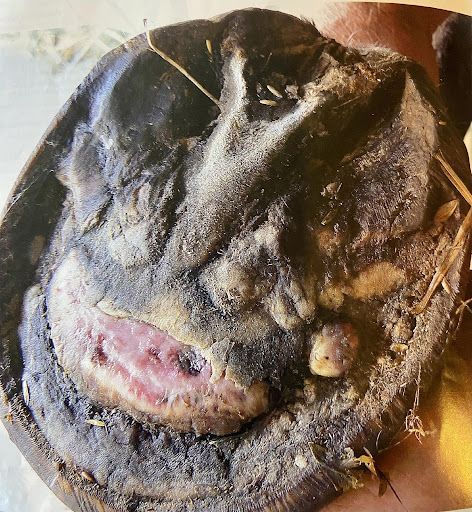LOOK DEEP INTO NATURE, AND THEN YOU WILL UNDERSTAND EVERYTHING BETTER, ALBERT EINSTEIN
Wild About Hooves • 14 September 2016
“Look deep into nature, and then you will understand everything better.” Albert Einstein
This quote resonates strongly with the culture of our business, Wild About Hooves. Anytime we are talking or teaching hoof care, horse keeping or horsemanship, we have the wild horse in the back of our mind. They provide the key to understanding horse psychology, a blueprint or map for hoof care and horse husbandry practices for our domestic horses.
There is so much to be learnt from observing wild horses. We are in awe of our Australian outback brumbies, their naturally shaped hooves that are capable of withstanding the toughest terrain, the food they source and survive on, the distances they will travel for water, the harsh environments they inhabit and the constant movement.
A documentary well worth viewing is The Desert Brumby by Professor Chris Pollitt of Queensland University. Pollitt is clearly awed by the ability of the desert brumby to “travel vast distances between food and water” and in “one of the most hostile environments a horse can find itself in.” Their hooves are “tough and hard” – “this is the gift evolution has given the horses, an ever growing hoof that can accommodate wear and tear yet stay hard and tough and allow horses to make incredible journeys every day of their lives”
Horse enthusiasts should never turn down the opportunity to study wild horses. To really study them in their natural environment. The knowledge they provide is the “holy grail” to horse keeping, hoof care and horsemanship.
This documentary DVD can be sourced via our online shop and you can find more information about our Wild Horse Adventure Tour. This guided 3 day tour heads outback of Australia every year to observe Brumbies in their natural environment. Dates for next year. June 3rd – 5th 2017. Book early to secure one of the limited seats.

Laminitis kills thousands of horses every year, and leaves thousands of others debilitated with lameness. It will and can affect any horse. And for you, the horse owner it can be devastating: you feel guilty and heartbroken at your horses suffering, confused with all the information as it is typically explained by professionals in scientific terms that can be difficult to understand, costly veterinary bills and you have the major task of nursing your horse back to recovery. . Unseasonal weather patterns around Australia with abundant rain and sunshine saw laminitis at a near epidemic last year. The reason being, that the environmental conditions can trigger increases in the sugar, starch and fructan. These collectively known as non-structural carbohydrates can cause laminitis in any horse or pony. Alarm bells ring this spring!! Be warned and be prepared, for prevention is better than cure.

The extraordinary relationship between humans and the horse has been running since before the birth of Christ. Indeed, there is evidence our domestication of horses goes as far back as 3500 BC. And ever since we recognised the utilitarian value of the horse, there has been the horseshoe. The use of horseshoes has become an almost unquestioned tradition. Humans have been nailing shoes onto horses’ hooves for well over a thousand years. Who can remember back to a time otherwise?

